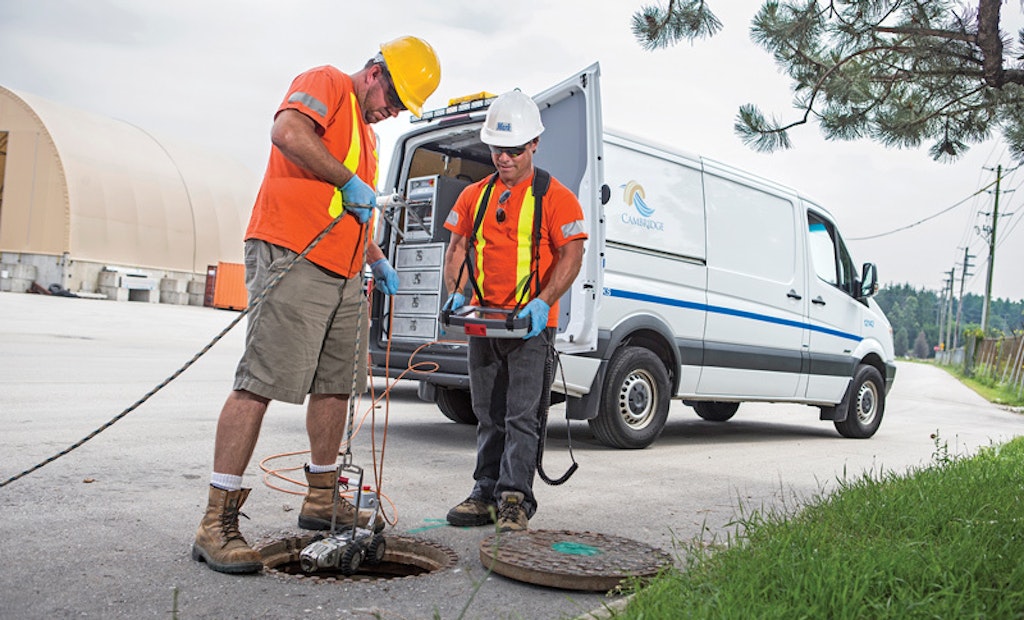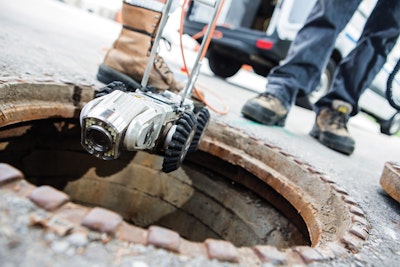
Interested in Cleaning?
Get Cleaning articles, news and videos right in your inbox! Sign up now.
Cleaning + Get AlertsIt’s a simple rule. You can’t maintain what you have unless you know what you have — and what shape it’s in. The City of Cambridge, Ontario, Can., understands that rule and has discovered that investing in asset management up front pays significant dividends down the line.
Cambridge, located about 60 miles southwest of Toronto, was formed in 1973 from the amalgamation of the communities of Galt, Preston, Hespeler and Blair. The Cambridge Transportation and Public Works Department (TPWD) was formed that same year to unite the separate utility systems. Among its responsibilities: sewer and water infrastructure, roads, sidewalks and street lighting.
In 2003, the department altered its approach from a piecemeal, reactive model to a unified approach focused on asset management. An Asset Management System Needs Study conducted by Earth Tech and Applied GeoLogics Inc. was presented to the City Council in early 2005. The council endorsed the report and established the city’s Asset Management and Support Services Division in 2005, hiring Mike Hausser as its first director of asset management.
“We’re focused on three priorities,” says Hausser. “The long-term needs and sustainability of the infrastructure, the capital and revenue requirements to support the current and growing population, and the operational requirements you need to provide today so you can operate the assets effectively through their expected service life.”
Instead of articulating lofty ideals, the program relied on a series of real-life program goals with verifiable objectives and timelines.
Asset action
A major inventory of city infrastructure, for example, took place between 2005 and 2008, using as-built drawings of sewer and water infrastructure, which were digitized, then compared to real-life assets to determine their accuracy. The department created an asset registry using GIS coordinates with an ESRI Geodatabase on an Oracle platform with a Rolta OnPoint portal for staff.
“We wanted to use standard deterioration curves for our pipe infrastructure, but the real world doesn’t always comply,” says Hausser. “By the time we work out the curves for some of the material, many of us will have retired or the pipes will have been replaced with pipes made of an entirely new material. We needed to look at actual data involving material, service calls, breakage reports, who installed the pipe, the soil surrounding that pipe and the liquids passing through that pipe. Only by collecting as much information as possible were we able to create models that would determine the probability of a pipe failing. We can see, for example, that there might be two different failure rates for identical installations, based on which contractor installed the pipe. One contractor might have used chains to lift the pipe and that might have damaged the cathodic protection layer, while the other didn’t.”
As the information collection process improves, so does the success rate of failure probability analysis.
“As we approach 100 percent, we’re now using those predictions to help develop long-term financial plans,” says Hausser. “That includes not only repair and maintenance requirements, but also capital budgets.”
Leveraging human experience
The department also began to record the expertise of dozens of employees who had amassed significant knowledge about the city’s infrastructure.
“These are the people who, if you call them in the middle of the night to deal with a water main break, can tell you the size and material of the pipe, just by its location,” says Yogesh Shah, manager of asset management for TPWD. “We captured as much of the important personal information held by these valued employees as possible and added it to our asset database.”
The department also became serious about adopting the latest technology.
“We began to attend trade shows and investigate the best possible technologies for each job,” says Hausser. “If a piece of technology can be shown to give us a better return on our investment, then we adopt that technology. All of our staff is now equipped with computer tablets, for example, to allow instant access to asset information.”
The city has become more proactive in routine system inspection and maintenance. In 2007 and 2008, the department inspected more than 90 percent of its manholes. It runs an acoustic leak detection program for its water system, and operates an Envirosight ROVVER X CCTV camera, lateral push cameras from Envirosight and Pearpoint, and a jetter from Sewer Equipment Company of America. The department also utilizes a Vactor 2100 jet-vac unit.
In addition to as-needed sewer cleaning, the department has scheduled 25 miles worth of sanitary and 25 miles of storm pipe cleaning and maintenance this year alone.
The department is also overseeing the replacement and rehabilitation of 3.5 miles of water mains and the rehabilitation of 1.5 miles of sewer lines this year.
Hausser notes that having responsibility for road, water and sewer infrastructure allows the department to combine efficiencies and schedule projects in such a way as to give taxpayers the best bang for their buck.
“We’ve avoided the silo effect that plagues some cities,” he says. “We all learn from each other and benefit from our combined expertise, so we can evolve to a higher state.”
IBM calling
The city’s growing expertise in asset management has attracted the interest of IBM and its Smarter Cities initiative.
“IBM told us that we had already made significant strides in asset management and the decision-making process that informs that system,” says Hausser. “The IBM Research Group offered us a pioneering partnership that would look at the way we do our planning, and replicate many of those steps using a software interface. If successful, the resulting product should be able to help do what we do better, faster and more effectively than what we do internally. That product could then be used by other cities around the world.”
The 18-month collaboration period between the city and IBM ended last December. The resulting product is a life cycle management system known as Intelligent City Planning and Operations, which provides an integrated approach to infrastructure management, condition assessment and capital planning. The program will work with other technology systems to compile information from all city assets to optimize capital spending across all departments.
“In testing, the product showed that it could do what it aimed to do,” says Hausser. “In some cases it does what we’ve been doing better and faster than we can do it ourselves.”
Remaining challenges
One of the department’s remaining challenges is to ensure that its capital and maintenance budgets reflect the more accurate financial projections produced by the asset management system. Budget crunches over the past few years, however, led to cuts in preventive maintenance programs to reflect historically low increases in water rates.
“As we are beginning to acknowledge the real cost of the system up front, we’re getting buy-in to set water and sewer rates that are sustainable for the system,” says Hausser. “While we’re not yet 100 percent sustainable, we don’t have funding deficits for the next 10 years and we’ve reinstated all of our inspection and preventive maintenance programs.”
Payback time
The city’s approach to asset management is paying big dividends. The city reduced inflow and infiltration to the sewer system by 22 percent between 2009 and 2012. Between 2010 and 2012, the city saved $2.5 million and reduced I&I by almost one billion gallons.
Water losses were likewise reduced by 22 percent between 2009 and 2012, which saved the city 580 million gallons of water and $1.6 million in revenue from 2010 to 2012. The number of water main breaks peaked at 52 in 2007, dropped to 37 in 2011 and was down to only 27 in 2012.
“Asset management and new technologies help to advance data and information sharing among the team, increase the cooperation and intelligence around renewal and other infrastructure needs, and enhance operations in the field through better work planning processes,” says Shah. “That results in better coordination and improved opportunities for proactive maintenance. At the end of day, people are working smarter and more cost-effectively.”









